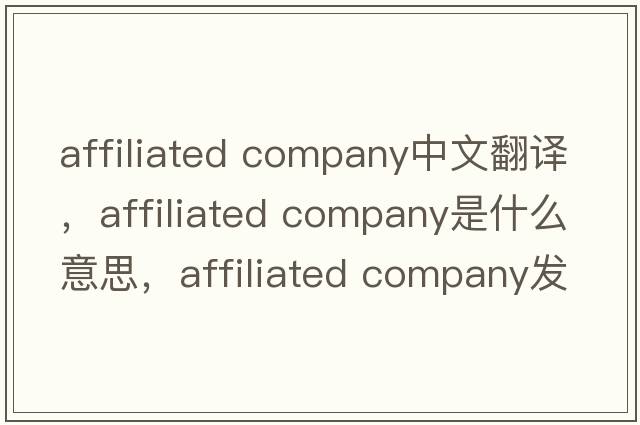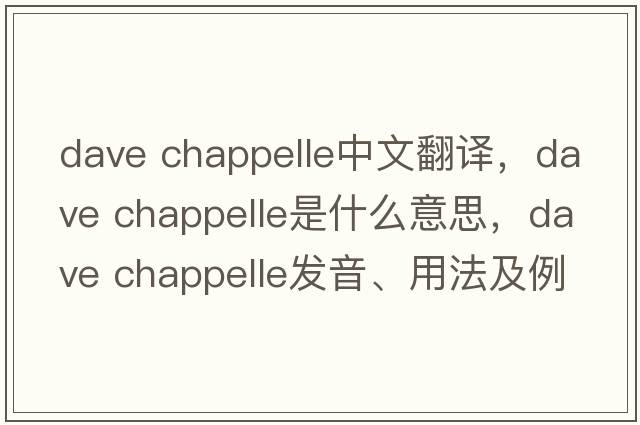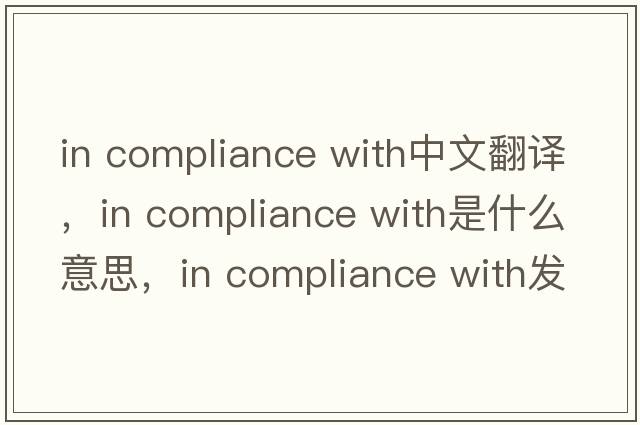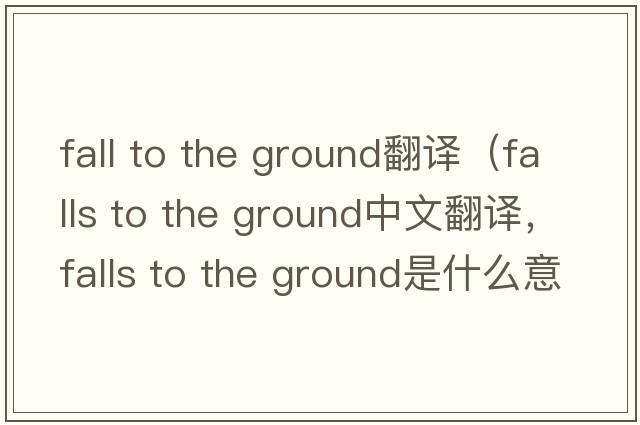affiliated company中文翻译,affiliated company是什么意思,affiliated company发音、用法及例句

1、affiliated company
affiliated company发音
英: 美:
affiliated company中文意思翻译
常用释义:关联公司:指与另一家公司有一定关系或合作关系的公司。通常是指两家公司在所有权、控制权或经营方面存在某种联系或共同利益。
n.联营公司;关联企业公司
n.联营公司,关联企业公司
affiliated company双语使用场景
1、Putting Mr Khodorkovsky in jail, or awarding a large contract to one's own affiliated company, could be justified as a public good.───将霍尔·科夫斯基打入大牢,或将一笔大单授予某人的附属公司,可被称作为公益服务而获得正当性。
2、Huaguang Construction Company is an affiliated company of Far Eastern Department Store.───华光建筑公司是远东百货公司的附属公司.
3、China's Fulida Group Holdings Ltd. purchased through overseas affiliated company the 90.88% stocks of Canada's Neucel Specialty Cellulose;───富丽达集团控股有限公司通过境外子公司收购加拿大纽西尔特种纤维素有限公司90.88%股权;
4、At present this system is applying in national network and affiliated company.───目前该系统已经在国家电网公司及其下属公司应用。
5、The affiliated company is just the combination enterprise which adapts to such economic demand.───关联公司正是适应这一经济需要而产生的一种联合企业的组织形式.
6、We have over 20,000 employees including those working in the affiliated company.───包括分公司在内,我们有超过两万名的员工.
7、Article author barks domestic bright is president of affiliated company of bare peak seed.───本文作者汪家灼是赤峰种子联营公司董事长.
8、Its affiliated company , Zhuhai xingsheng Air Purification Engineering Limited, which comtracts product installation.───属下有“珠海兴盛空气净化工程有限公司”, 承揽产品安装工程.
affiliated company相似词语短语
1、utility company───[经]公用事业公司
2、limited company───有限公司;(英)[经]股份有限公司(等于limited-liabilitycompany)
3、private company───私人公司;股份不公开公司
4、polite company───有礼貌的同伴
5、associated companies───联营公司
6、associated company───联营公司,联号
7、listed company───上市公司,[金融]股票上市的公司
8、public limited company───(PLC)股份有限公司
9、closed company───股份不公开的公司;股份不公开公司
2、I want the information of Iceland
An island country in the North Atlantic near the Arctic Circle. Norse settlers arrived c. 850–875, and Christianity was introduced c. 1000. Iceland passed to Norway in 1262 and, with Norway, to Denmark in 1380. In 1918 it became a sovereign state still nominally under the Danish king, until Icelanders voted for full independence in 1944. Reykjavík is the capital and the largest city. Population: 293,000 .
Iceland, Icel. Ísland, officially Republic of Iceland, republic (2005 est. pop. 297,000), 39,698 sq mi (102,819 sq km), the westernmost state of Europe, occupying an island in the Atlantic Ocean just S of the Arctic Circle, c.600 mi (970 km) W of Norway and c.180 mi (290 km) SE of Greenland. The republic includes several small islands, notably the Vestmannaeyjar off the southern coast of Iceland. Reykjavík is the capital and largest city.
Land and People
Deep fjords indent the coasts of Iceland, particularly in the north and west. The island itself is a geologically young basalt plateau, averaging 2,000 ft (610 m) in height (Öraefajökull, c.6,950 ft/2,120 m high, is the highest point) and culminating in vast icefields, of which the Vatnajökull, in the southeast, is the largest. There are about 200 volcanoes, many of them still active; the highest is Mt. Hekla (c.4,900 ft/1,490 m). Hot springs abound and are used for inexpensive heating; the great Geysir is particularly famous. The watershed of Iceland runs roughly east-west; the chief river, the Jökulsá, flows N into the Axarfjörður (there are several other rivers of the same name).
The climate is relatively mild and humid (especially in the west and south), owing to the proximity of the North Atlantic Drift; however, N and E Iceland have a polar, tundralike climate. Grasses predominate; timber is virtually absent, and much of the land is barren. (Some of this is a result of human habitition, which led to deforestation and overgrazing.) Only about one fourth of the island is habitable, and practically all the larger inhabited places are located on the coast; they are Reykjavík, Akureyrí, Hafnarfjörður, Siglufjörður, Akranes, and Isafjörður.
The population, until recently largely homogeneous and isolated, is descended mainly from Norse settlers and their slaves. (This homogeneity, combined with longstanding genealogical records, has made Icelanders the subject of fruitful genetic study.) The Lutheran Church is the established church and more than 95% of the people are members of it, but there is complete religious freedom. The official language is Icelandic (Old Norse). Virtually all Icelanders are literate; they read more books per capita than any other people in the world. There is a university (est. 1911) at Reykjavík.
Economy
About 15% of the land is potentially productive, but agriculture, cultivating mainly hay, potatoes, and turnips, is restricted to 0.5% of the total area. Fruits and vegetables are raised in greenhouses. There are extensive grazing lands, used mainly for sheep raising, but also for horses and cattle. Fishing is the most important industry, accounting for 20% of the gross national product (GNP) and 75% of the country's exports. Aside from aluminum smelting and ferrosilicon production, Iceland has little heavy industry and relies on imports for many of the necessities and luxuries of life. More than half of Iceland's GNP comes from the communications, trade, and service industries. Tourism is also important. Most trade is with the United Kingdom, Germany, the Scandinavian countries, and the United States. In 1990, Iceland's per capita national income was higher than the average for Europe. The country experienced a recession from the late 1980s into the early 1990s, as fish stocks dwindled and world prices for fish and aluminum dropped. However, the economy stabilized in the 1990s and the government continued its policies of diversifying the economy and expanding hydroelectric and geothermal energy resources, thus reducing dependence on oil imports.
Government
Iceland is a parliamentary democracy governed under the constitution of 1944. It has a cabinet responsible to the unicameral parliament (the Althing) and a president elected by popular vote for a four-year term. The four major parties are the Independence, the Progressive, the Social Democratic, and the People's Alliance. Iceland is divided into 23 counties.
The republic possesses neither an army nor a navy. The government plays a major part in the economic life of the country and has established monopolies on the import and sale of several important articles. Social welfare legislation is extensive.
History
Settlement and Subjection
Iceland may be the Ultima Thule of the ancients. Irish monks visited it before the 9th cent., but abandoned it on the arrival (c.850–875) of Norse settlers, many of whom had fled from the domination of Harold I. The Norse settlements also contained many Irish and Scottish slaves, mainly women. In 930 a general assembly, the Althing, was established near Reykjavík at Thingvellir, and Christianity was introduced c.1000 by the Norwegian Olaf I, although paganism seems to have survived for a time. These events are preserved in the literature of 13th-century Iceland, where Old Norse literature reached its greatest flowering. (Modern Icelandic is virtually the same language as that of the sagas.)
Politically, Iceland became a feudal state, and the bloody civil wars of rival chieftains facilitated Norwegian intervention. The attempt of Snorri Sturluson (1179–1241) to establish the full control of King Haakon IV of Norway over Iceland was a failure; however, Haakon incorporated Iceland into the archdiocese of Trondheim and between 1261 and 1264 obtained acknowledgment of his suzerainty by the Icelanders. Norwegian rule brought order, but high taxes and an imposed judicial system caused much discontent. When, with Norway, Iceland passed (1380) under the Danish crown, the Danes showed even less concern for Icelandic welfare; a national decline (1400–1550) set in. Lutheranism was imposed by force (1539–51) over the opposition of Bishop Jon Aresson; the Reformation brought new intellectual activity.
The 17th and 18th cent. were, in many ways, disastrous for Iceland. English, Spanish, and Algerian pirates raided the coasts and ruined trade; epidemics and volcanic eruptions killed a large part of the population; and the creation (1602) of a private trading company at Copenhagen, with exclusive rights to the Iceland trade, caused economic ruin. The private trade monopoly was at last revoked in 1771 and transferred to the Danish crown, and in 1786 trade with Iceland was opened to all Danish and Norwegian merchants. The exclusion of foreign traders was lifted in 1854.
National Revival
The 19th cent. brought a rebirth of national culture (see Icelandic literature) and strong agitation for independence. The great leader of this movement was Jón Sigurðsson. The Althing, abolished in 1800, was reestablished in 1843; in 1874 a constitution and limited home rule were granted; and in 1918, Iceland became a sovereign state in personal union with Denmark. The German occupation (1940) of Denmark in World War II gave the Althing an opportunity to assume the king's prerogatives and the control of foreign affairs. Great Britain sent (1940) a military force to defend the island from possible German attack, and this was replaced after 1941 by U.S. forces.
In 1944 an overwhelming majority of Icelanders voted to terminate the union with Denmark; the kingdom of Iceland was proclaimed an independent republic on June 17, 1944. Sveinn Björrnsson was the first president. Iceland was admitted to the United Nations in 1946; it joined in the Marshall Plan and the North Atlantic Treaty Organization. In 1946, Iceland granted the United States the right to use the American-built airport at Keflavík for military as well as commercial planes. Under a 1951 defense pact, U.S. troops were stationed there. Björnsson was succeeded by Ásgeir Ásgeirsson.
Relations with Great Britain were strained when Iceland, in order to protect its vital fishing industry, extended (1958) the limits of its territorial waters from 4 to 12 mi (6.4–19.3 km). The conflict, which at times led to exchanges of fire between Icelandic coast guard vessels and British destroyers, was resolved in 1961 when Great Britain accepted the new limits. Kristjárn Eldjárn was elected president in 1968 and reelected in 1972 and 1976. Iceland joined the European Free Trade Association in 1970. In 1971 elections the Independence party–Social Democratic party coalition government, which had governed for 12 years, lost its majority, and a leftist coalition came to power.
The dispute with Britain over fishing rights (widely known as the “cod wars”) was renewed in 1972 when Iceland unilaterally extended its territorial waters to 50 mi (80 km) offshore and forbade foreign fishing vessels in the new zone. An interim agreement was reached in 1973, whereby the British would limit their annual catch and restrict themselves to certain fishing areas and specified numbers and types of vessels.
In Jan., 1973, the Helgafell volcano on Heimaey island erupted, damaging the town of Vestmannaeyjar. Later in the year Iceland and the United States began revising the 1951 defense pact, with a view toward ending the U.S. military presence. U.S. forces still use the NATO base at Keflavík Airport, and their presence continues to be a point of contention among Iceland's parties.
A split in the ruling coalition over economic policies caused the Althing to be dissolved in 1974; following elections, the Independence party formed a new government. Iceland extended its fishing limits to 200 mi (320 km) in 1975, which, after more skirmishes with Great Britain, was finally recognized in 1976. Vigdís Finnbogadóttir was elected president in 1980, thus becoming the world's first popularly elected female head of state; she was reelected in 1984, 1988, and 1992. Davíð Oddsson, of the conservative Independence party, became prime minister in 1991; his center-right coalition was returned to office in 1995, 1999, and, narrowly, 2003. In 1996, Ólafur Ragnar Grímsson was elected to succeed Finnbogadóttir, who retired as president. The highly popular Grímsson was reappointed to the post by parliament without an election in 2000; he was reelected in 2004. Oddsson resigned and exchanged posts with coalition partner and foreign minister Halldór Ásgrímsson, of the Progressive party, in Sept., 2004 (Oddsson stepped down as foreign minister a year later).
Bibliography
See V. H. Malmström, A Regional Geography of Iceland (1958); A. Líndal, Ripples from Iceland (1962); B. Guthmundsson, The Origin of the Icelanders (tr. 1967); B. Gröndal, Iceland: From Neutrality to NATO Membership (1971); V. Stefansson, Iceland (1939, repr. 1971); J. J. Horton, Iceland (1983); M. S. Magnusson, Iceland in Transition (1985); E. P. Durrenberger and G. Palsson, ed., The Anthropology of Iceland (1989).
版权声明: 本站仅提供信息存储空间服务,旨在传递更多信息,不拥有所有权,不承担相关法律责任,不代表本网赞同其观点和对其真实性负责。如因作品内容、版权和其它问题需要同本网联系的,请发送邮件至 举报,一经查实,本站将立刻删除。














